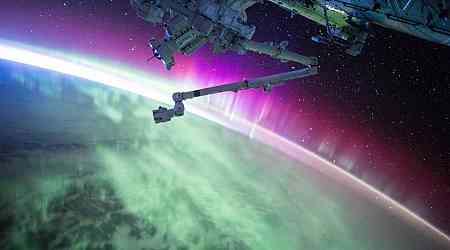The National Oceanic and Atmospheric Administration (NOAA) has issued a warning about a severe geomagnetic storm, classified as level G4. This storm is anticipated to affect power grids, GPS systems, and radio communications. Despite these potential disruptions, it provides an extraordinary opportunity to witness vibrant auroras in high-latitude regions, especially across parts of Canada and the United States.
NASA astronaut Matthew Dominick, who is currently aboard the International Space Station (ISS), has shared an impressive timelapse video of the event. The footage reveals the moon setting against a backdrop of striking red and green auroras, followed by a sunrise that casts a soft blue light on the Soyuz spacecraft. This timelapse was captured using an Arri Zeiss 15mm lens mounted on a Nikon Z9, which was recently delivered to the ISS by the Cygnus cargo spacecraft.
We're in the middle of an intense geomagnetic storm! 🌎🧲💥
— NASA Sun & Space (@NASASun) August 12, 2024
A series of solar eruptions arriving at Earth are triggering widespread auroras. Here's what NASA space weather analyst Carina Alden saw last night as she traveled through Michigan and Wisconsin! https://t.co/KG5pvCdyit pic.twitter.com/qrpdkva4Vj
Solar flares, also known as coronal mass ejections (CMEs), are responsible for these geomagnetic storms. These flares occur when an unstable magnetic field on the Sun's surface releases charged particles into space. The intensity of these events is measured on a scale from G1 to G5, with G5 being the most severe. A G5 flare was recorded earlier this year, leading to significant disruptions in power grids, GPS, and radio communications.
When these charged particles collide with Earth's atmosphere, they interact with atmospheric gases, creating the northern lights, or aurora borealis. This current geomagnetic storm, classified as G2, is expected to persist until August 14. During this period, the auroras will continue to be visible, providing a remarkable display of natural beauty.
Although the storm poses certain challenges, such as potential impacts on technology and infrastructure, it also offers a chance to experience one of nature's most awe-inspiring phenomena. The ongoing auroras serve as a stunning reminder of the dynamic interactions between our planet and solar activity.































